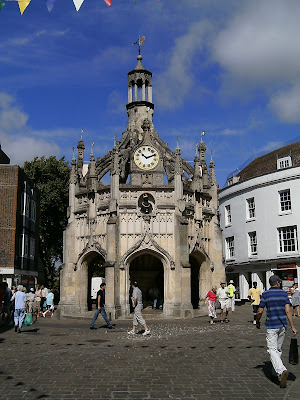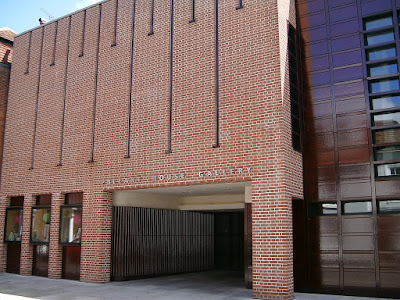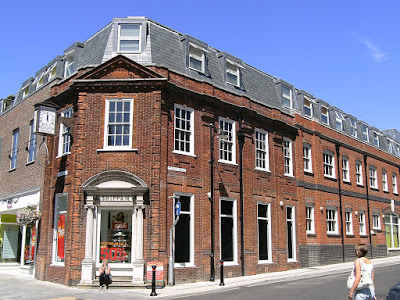Chichester is a town on the Roman pattern with streets running to all the points of the compass from a central market cross: there are North, South East and West Streets. There is also a town within a town in the Pallants, which in the south eastern quarter. These streets monitor their big brother with North South East and West Pallants. When I called the Chichester Festivities were in full swing so it was difficult to see interiors of buildings but externally some are splendid.
King Charles Stuart gazes down from the 16th Century market cross in the town.

The market has moved to a car park near the station but the cross is rich with carvings although the statue niches are empty today.
Chichester's glory is the Cathedral with its tall spire visible from the sea.

Unfortunately when I first went there was a prizegiving for the local prebendery school so I couldn't really go in, and later there was a concert in the cathedral so I saw very little of the nave and transepts, although there was a large painting of the bishops of Chichester. The treasury was open and I had a look in there at the various parish treasures including chalices and bread plates. There were many communion cups from 1568 which was the year that Chichester Diocese began the innovative practice off giving the wine to the people, previously it was reserved for the clergy alone. I reflected wryly that this should be the practice today - Perhaps that's the way round women bishops - From 2010 x diocese will be able to appoint a woman bishop - from 2011 y diocese and so on... Perhaps even one day we will have gay bishops who do not conceal it. Maybe that's a step too far (sigh). The Cathedral was filled with modern art, much of it collected by the previous bishop and included a sculpture garden, including this one - Place for a boy!

. In fact the city does well for modern Art, the Pallant House gallery, recently extended with the addition of a restaurant is a major modern art gallery in the South. Can't remember the admission charge being as steep as £8.25 last time I visited though...

There was once a priory in the town and the remains, formerly used as a guildhall are now in Priory park. Surronded by the Chichester Festivities no picture was possible. It is an accompaniment to the Chichester Museum and contains some Roman stoneware. The real guildhall is in North Street.

The museum was pleasant enough but being wound down for its closure and removal to a site opposite the library, where a Roman Baths had been found. I will look forward to this. The Library was opened by Prof. Asa Briggs while he was chancellor of Sussex University.
You may be thinking that Chichester is all art and culture, but you'd be wrong. When I last visited regularly there was an industrial meat processing plant in the middle of the Town Centre. Shippams meat paste was produced in a factory there, and stank out that part of town. When I was a child upermarkets carried shelves of this nasty teatime staple, but thankfully the market has declined since then. This may possibly be due to some extremely off the wall advertising by Messers Shippams, which did not bring the product to the minds of people but seemed to positively discourage them from buying it.

And in case you don't know what I mean, here's a
link, which also explains the title of this post!




